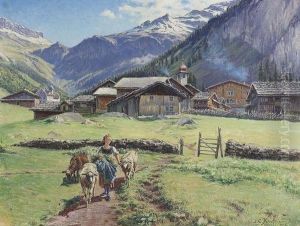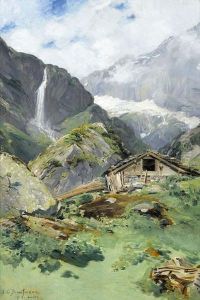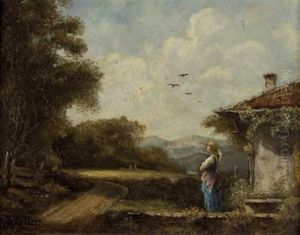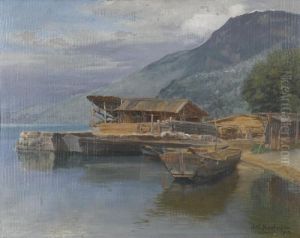Josef Clemens Keller Paintings
Josef Clemens Keller was a German lithographer and painter known for his intricate works and contributions to the field of graphic design during the late 19th and early 20th centuries. Born on December 10, 1873, in Gmund, Germany, Keller embarked on his creative journey at a young age, demonstrating a keen interest in visual arts. He trained in Munich, a city famous for its vibrant art scene, which allowed him to be exposed to a variety of artistic movements and techniques.
Throughout his career, Keller developed a distinctive style that blended elements of Art Nouveau with a keen sense of realism. He was particularly admired for his ability to capture the nuances of light and shadow, which lent a lifelike quality to his lithographs. Keller's subject matter varied widely, from pastoral scenes and portraits to religious themes and allegorical works, showcasing his versatility as an artist.
In addition to his work in lithography, Keller was an accomplished painter, often working with oils and watercolors. His paintings, like his prints, were characterized by a meticulous attention to detail and a harmonious use of color. Keller's talent did not go unnoticed, and during his lifetime he received numerous commissions for both public and private collections.
Despite the destruction and upheaval caused by World War I and World War II, Keller continued to produce art that resonated with the spirit of his time. His works from these periods reflect the social and political changes occurring in Germany and Europe as a whole, yet always maintained his signature aesthetic quality.
Josef Clemens Keller passed away on June 16, 1949, leaving behind a legacy of artistic excellence that continues to be appreciated by art historians and collectors. His contributions to lithography and painting have earned him a place among the respected artists of his era, and his works remain an important part of Germany's cultural heritage.




